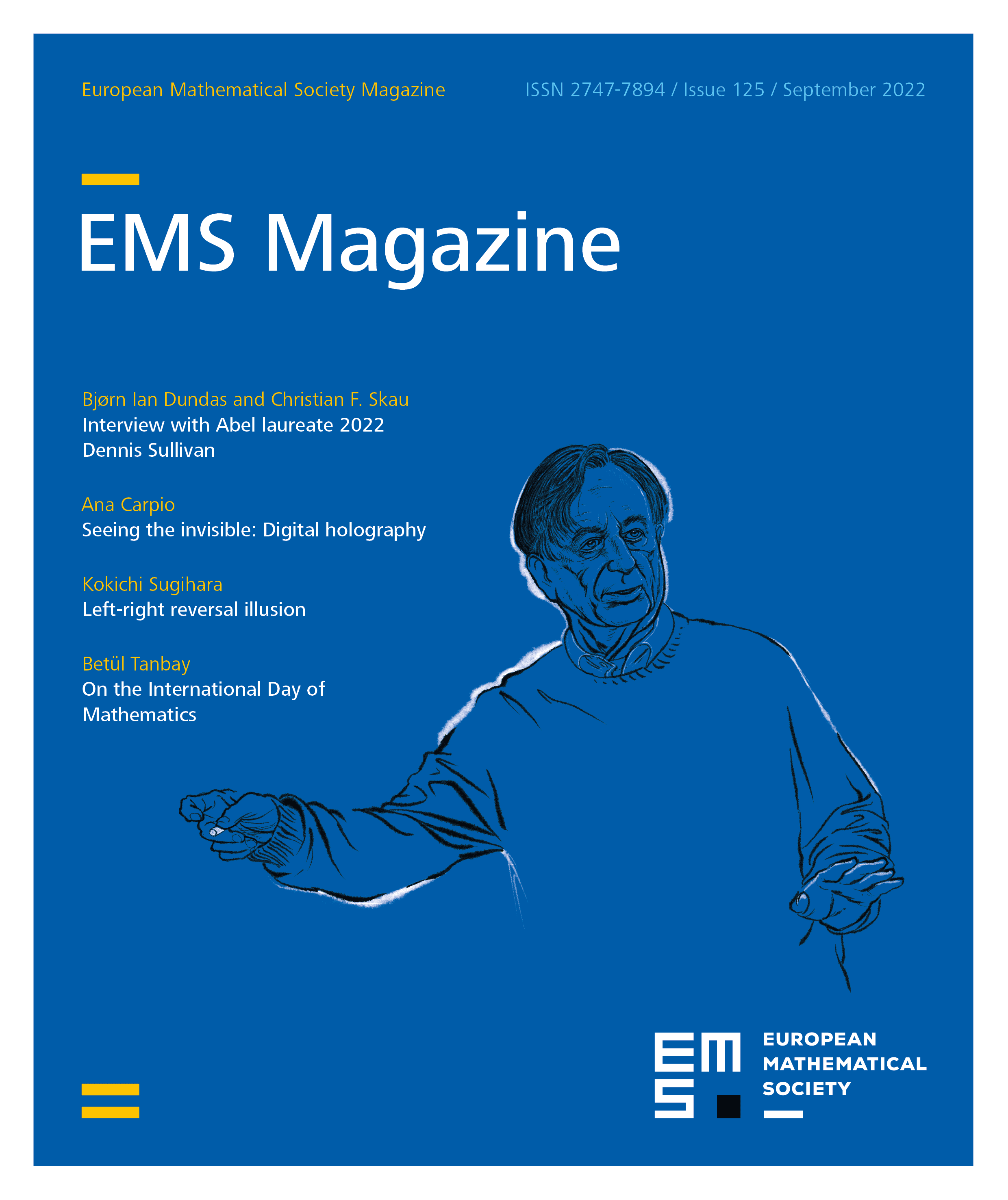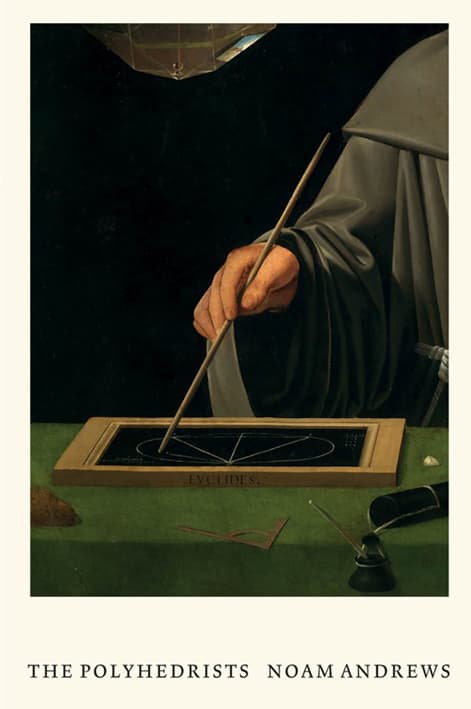All rights reserved.
Euclid’s Elements has been the book of choice for centuries to teach geometry. Three-dimensional geometry was only considered near the end in Book XI, and the regular or Platonic solids (tetrahedron, cube, octahedron, dodecahedron and icosahedron) appeared in the very last Book XIII. This was not on the regular curriculum of the quadrivium. Besides these five regular solids and the thirteen Archimedean solids that can be seen as semi-regular, it became fashionable among artists and craftsmen of the 15–17th century to use or depict these solids in their work. Soon several truncations, indentations, and stellations generated a plethora of so-called irregular solids. Irregular is a misleading term, since they are still very symmetric, but they do not satisfy the classical definition of the Platonic or Archimedean corpora. Note that it were not the mathematicians who published theory-free texts with plots and maps useful as manuals to produce these solids. With the invention of perspective, showing these objects in their pictures was a token of craftsmanship and it illustrated the supposed mathematical, or at least intellectual skills of the person being portrayed. With many examples and beautiful illustrations, the historian and architect Noam Andrews tells the story of this evolution in the wake of the Renaissance period.
The most iconic pictures involving nested polyhedra can be linked to Kepler, who associated the Platonic solids with the solar system. Also well known is Dürer’s Melencolia I, featuring a polyhedron and a magic square. Some may know the portrait of Luca Pacioli attributed to Jacopo de’ Barban that has a water-filled glass polyhedron hanging on a string and a solid polyhedron on the table. Pacioli is the author of Divina proportione (1509), a book illustrated by Leonardo Da Vinci in which he discusses the golden ratio and the use of perspective. The latter was invented less than a century ago and that was brought to a conclusion by Da Vinci.
Andrews explains how the polyhedral ideas evolved mainly throughout the 16th century. It all starts with Erhard Ratdolt’s edition of Euclid’s Elements (1482) that had some graphical illustrations. These illustrations are natural for us, but they were new then, in the early days of book printing. Graphics helped to understand the proofs, but it was a completely different matter to paint, etch or draw the three-dimensional geometric solids in proper perspective. At the universities, the study of perspective was part of optics. Drawing and constructing the solids was the concern of an artist and not so much of mathematical interest.
In the next chapters, the 16th century Bavarian city of Nuremberg is the historical scenery. This is where Dürer had access to the Regiomontanus-Walther library and where he published his book on geometry Underweysung der Vermessung (1525) [Instruction on measurement] treating among other things the Platonic, Archimedean, and other solids. That book contained a lot of accumulated knowledge, not only for painters and sculptors, but also for stonemasons, carpenters and goldsmiths. He places visualisation central, which was new for mathematical texts. Nets of planar developments of polyhedra could be cut out and folded and glued together to form a paper 3D version of the solid and vice versa, the solids could be developed into a printable 2D net.
Now Lehrbücher started circulating in Southern Germany. These were like very graphical instruction manuals, that were not generated at a university. They were manuals for artists and craftsmen that were devoid of theory and theorems. For example, Augustin Hirshvogel’s Geometria (1543) was a very popular one. The 3D versions could be used as art objects but also as a teaching object to practice perspective. Placed in front of the student, mechanical devices were constructed that allowed to transfer the view of a solid to a planar perspective view. Theory and theorems were not involved.
Wenzel Jamnitzer was a famous goldsmith/mathematician who worked for the Holy Roman Emperors. He also came to Nuremberg where he published his Perspectiva corporum regularium (1568) providing 24 variations (6 per page) for each of the 5 Platonic solids, starting from the simple solid, modified by increasingly more complicate truncations, indentations, or stellations.
The next two chapters are about probably lesser known forms of polyhedrism. The first is polyhedral marquetry often for furniture in the form of cabinets. There is an exquisite example of such a cabinet in the Museum for Applied Arts in Cologne, richly decorated with polyhedral objects. The little known, somewhat enigmatic artist Lorenz Stöer was a very popular inspiration for Augsburger cabinets. He produced eleven surrealistic colour graphics showing deserted ruins of cities populated by all kinds of polyhedral structures. The last chapter is about the invention of sophisticated lathes or turn tables used by master turners to make ivory columns (Säulen) which had on top, or sometimes half way, some sphere-like dodecahedron or another solid with opened faces so that inside you can find another smaller one that had yet another one inside, like Russian matryoshkas. These contrefait spheres were fashionable at the Saxonian court in Dresden. Egidius Lobenigk and Georg & Hans Wecker were famous master turners.
In an epilogue, Andrews reflects on the role played by the polyhedrists. The popularisation did come from the application, and not from the theory. It was only by the end of the 16th century that gradually the subject became again absorbed by the academia. This movement with popular Lehrbücher has awakened geometry from almost two thousand year of frozen knowledge. Artists started to think outside the plane and the generalisation and endless variation of the classical solids made it possible for geometry to break loose from its static immobility and an incentive was given for a more evolved geometry as developed by Kepler, Monge, Descartes, and at a larger scale even Einstein.
This is a nicely illustrated and easy to read book on some less-known historical aspects of applied geometry. Most of the material covered is restricted to Southern Germany and its content is mostly historical and cultural, with little mathematics. It is however interesting to learn how this specific geometrical topic became aesthetically fashionable and how it evolved outside the universities, yet undoubtedly had an impact on the development of geometry.
Noam Andrews, The Polyhedrists, MIT Press, 2022, 316 pages, Paperback ISBN 978-0-2620-4604-6
Cite this article
Adhemar Bultheel, Book review: “The Polyhedrists” by Noam Andrews. Eur. Math. Soc. Mag. 125 (2022), pp. 48–49
DOI 10.4171/MAG/93
